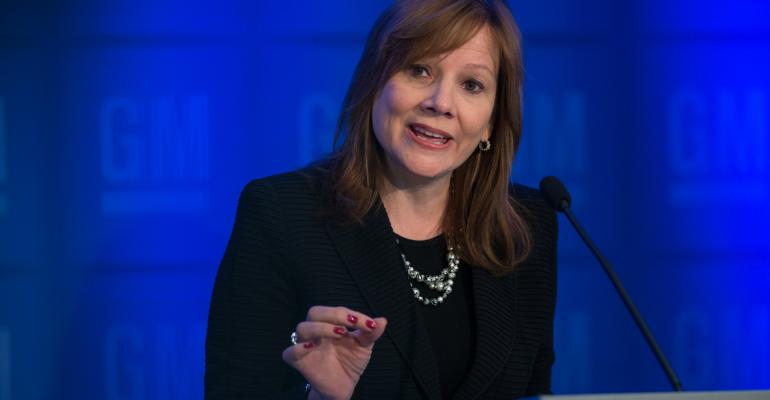MILFORD, MI – General Motors CEO Mary Barra is taking off the kid gloves, saying she is losing patience with the pace of change and signaling to investors the automaker is on an irrevocable mission to become the world’s most valued automotive company.
“I’m more impatient, and I think that’s a good thing,” she tells media here just ahead of a day-long backgrounder for financial analysts in which the automaker will spell out medium-term-and-beyond financial, sales, product and sourcing targets.
The plan will be illuminated in more detail throughout the day, but the ultimate goal is to reverse a slide that has seen GM stock sink 17% since Barra took over as CEO from Dan Akerson in January and raise the expectations of market analysts, some of whom have lowered their outlooks to below the $33-per-share price of the automaker’s initial public offering in 2010.
Core to the plan is a targeted increase in margins to 9%-10% on a pretax basis by early in the next decade, a bogey North American operations are expected to reach by 2016.
Also included in those financial goals is a return to profitability for GM’s European arm in 2016 and planned “improvements” to its core operations in South America. The automaker notes it will continue to address challenges in overseas markets other than China, as it reshapes its brand strategy, cost structure and sourcing infrastructure.
To get where it wants to go, GM is preparing an extensive new-product push that will drive 38% of its sales in 2016-2017 and 47% in 2019. That compares with an expected 27% of volume in 2015 from new products coming in the next 18 months.
Mark Reuss, executive vice president-Global Product Development, Purchasing and Supply Chain, is expected to roll out plans for more flexible vehicle architectures based on core component sets, a strategy similar to one followed by Volkswagen, with its MQB platform, and other top global automakers. WardsAuto first reported on that plan a year-ago.
By 2020, 99% of GM’s global production will be based on core architectures, and by 2025 it will have four basic vehicle sets, one each for front-drive and rear-drive vehicles, plus an SUV and truck platform.
Models derived from common architectures will share such things as engine positioning and battery location and certain hard points in the front section in order to gain production flexibility across vehicle lines stretching from the B- to E-segment.
Also part of that new-product initiative are advances in material technology, the automaker says in an apparent answer to competitor Ford’s extensive use of aluminum in its new F-Series fullsize truck.
GM says its mixed-materials strategy will take advantage of its patented welding technology to use a combination of steel and aluminum stampings, castings and extrusions that will result in 20% fewer parts and greater torsional stiffness and better noise, vibration and harshness characteristics across vehicle lines.
Also key is the automaker’s plans to grow the Cadillac brand, including in China, where overall GM plans to invest $14 billion by 2018 to open five new manufacturing plants and boost its infrastructure in order to sell nearly 5 million vehicles annually.
The China expansion calls for launch of 60 new or refreshed products, including nine SUVs.
“We see specific growth opportunities, not only in China and emerging markets, but with Cadillac,” Barra notes.
Efficiency gains also are being eyed through a new parts-sourcing plan that calls for better relationships with its core suppliers.
Included is a shift in its Mexico strategy, where GM says it expects to bundle its contracts toward a volume of 1 million units across five main platforms and three assembly plants, according to documents released ahead of today’s presentations. Currently, GM sources seven separate programs there, with parts contracts averaging annual volumes of only 100,000 units.
Barra says her executive team has spent “a significant amount of time,” developing the game plan, despite the massive ignition-switch-recall fiasco that has been a distraction for the new regime since it was put in place at the start of the year.
Becoming the industry’s highest-valued automaker means returning value to shareholders – by “turning excess cash flow to stockholders,” retaining customers for life, being the most-desired company to work with for suppliers and providing the best dealership experience, she says.
“We own this plan, we’re committed to delivering,” Barra says.





